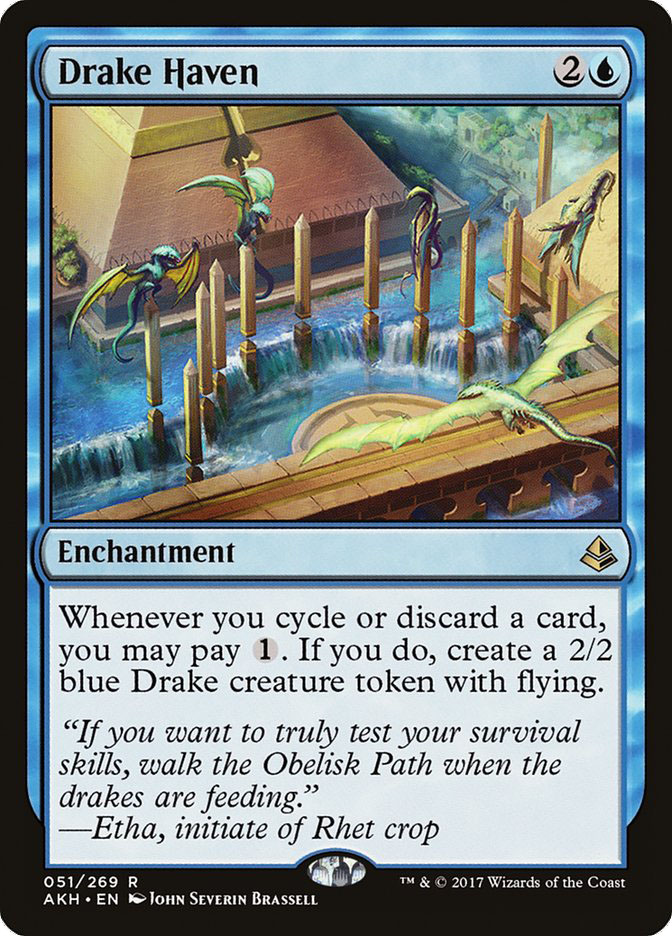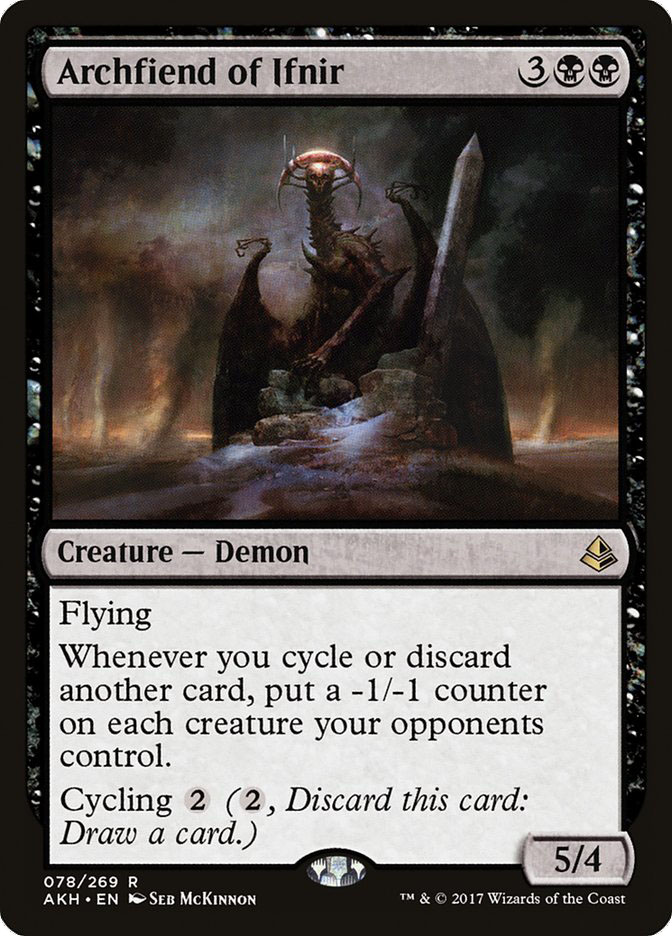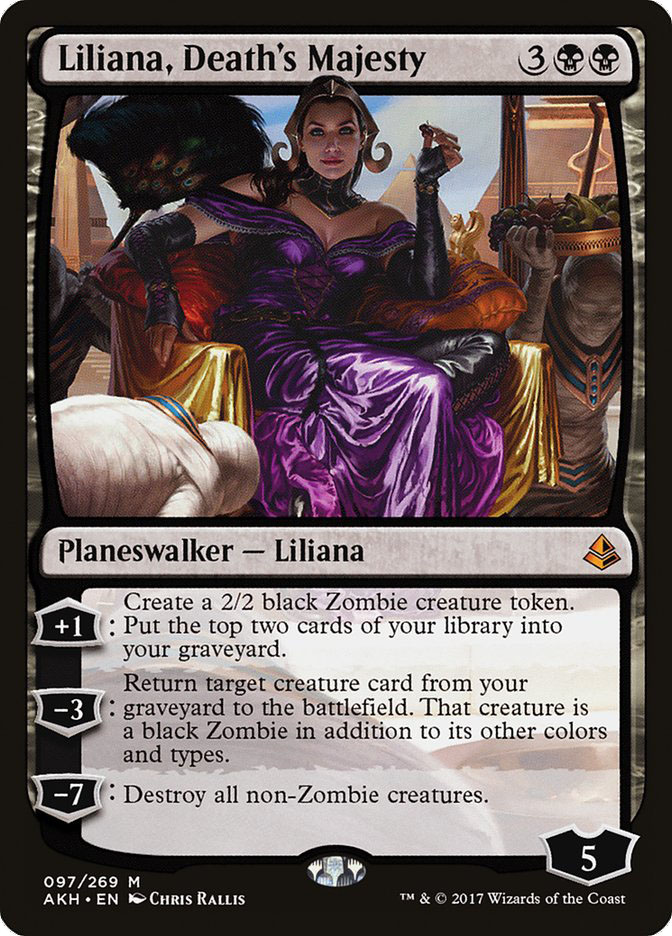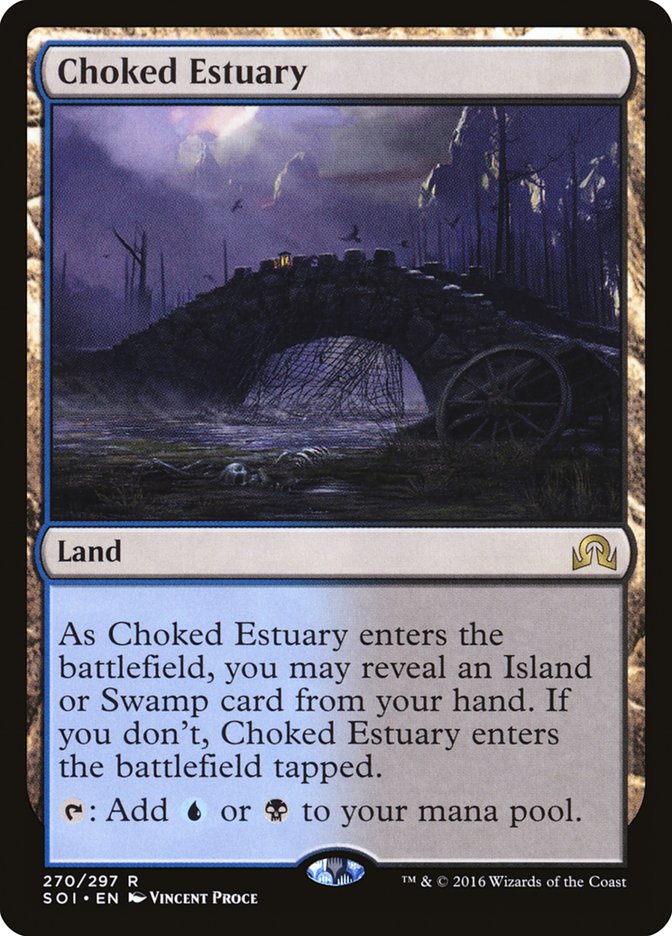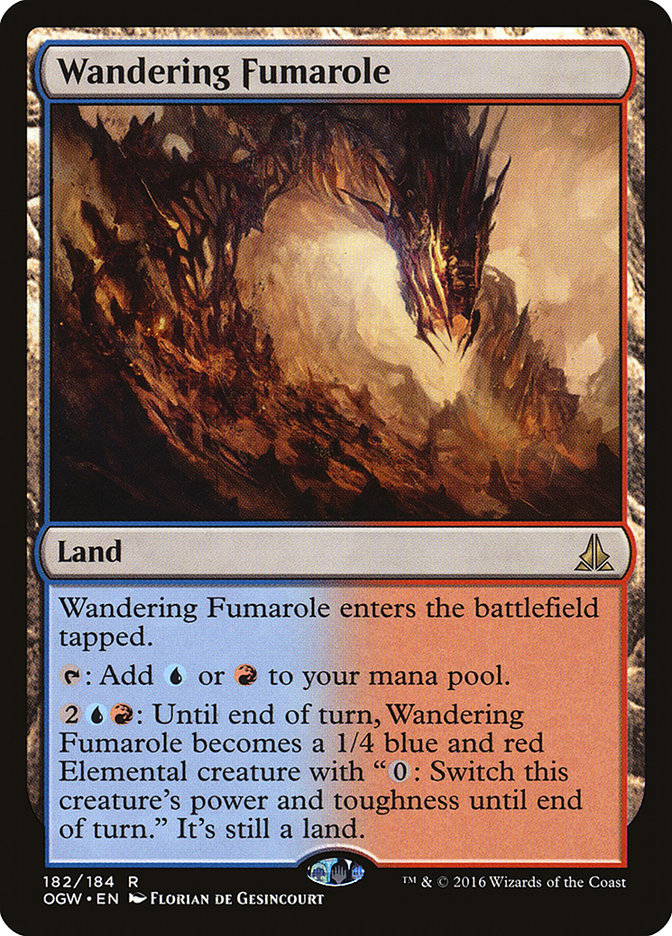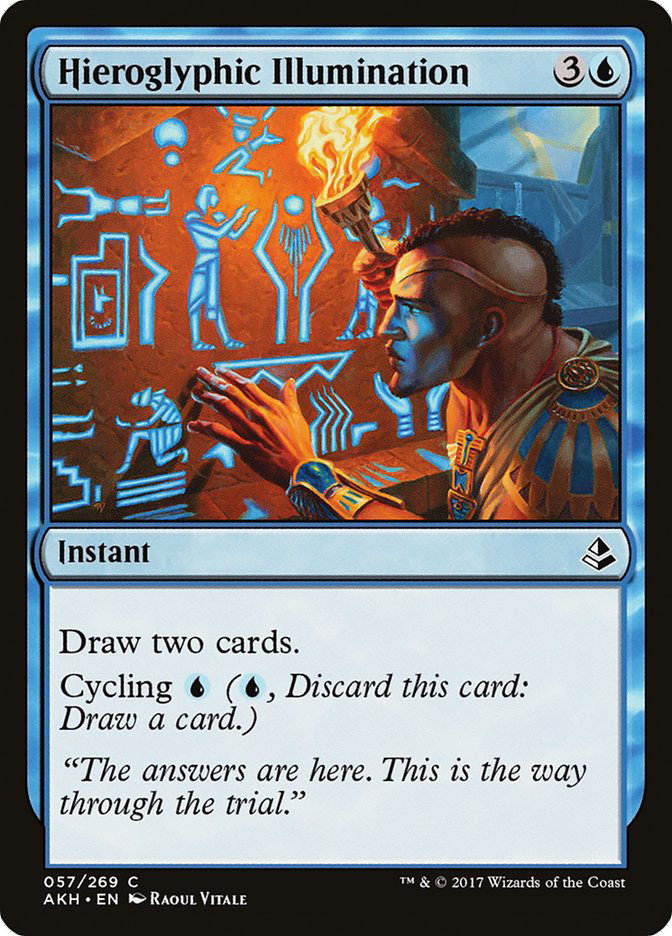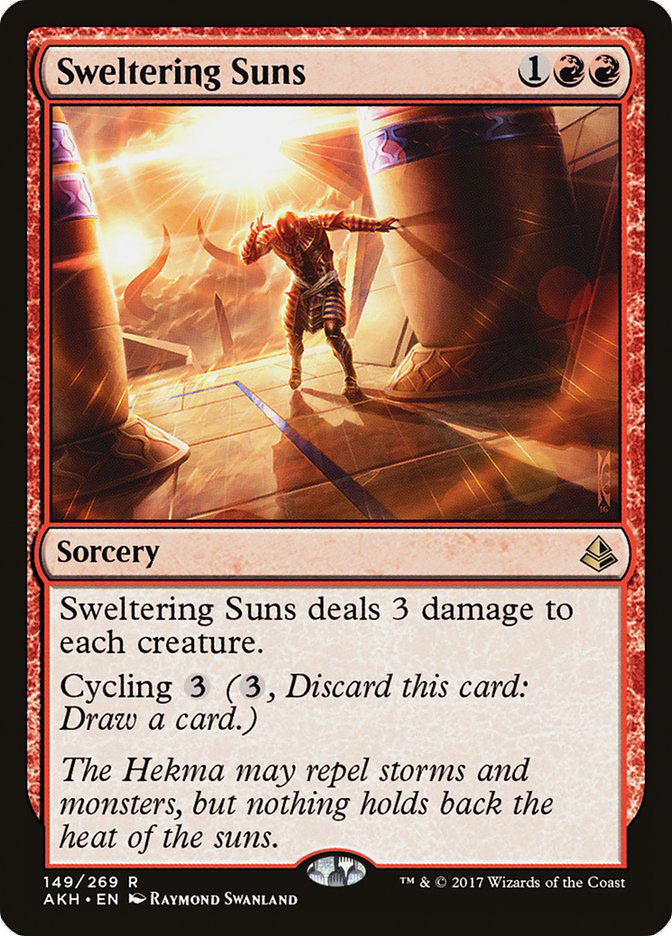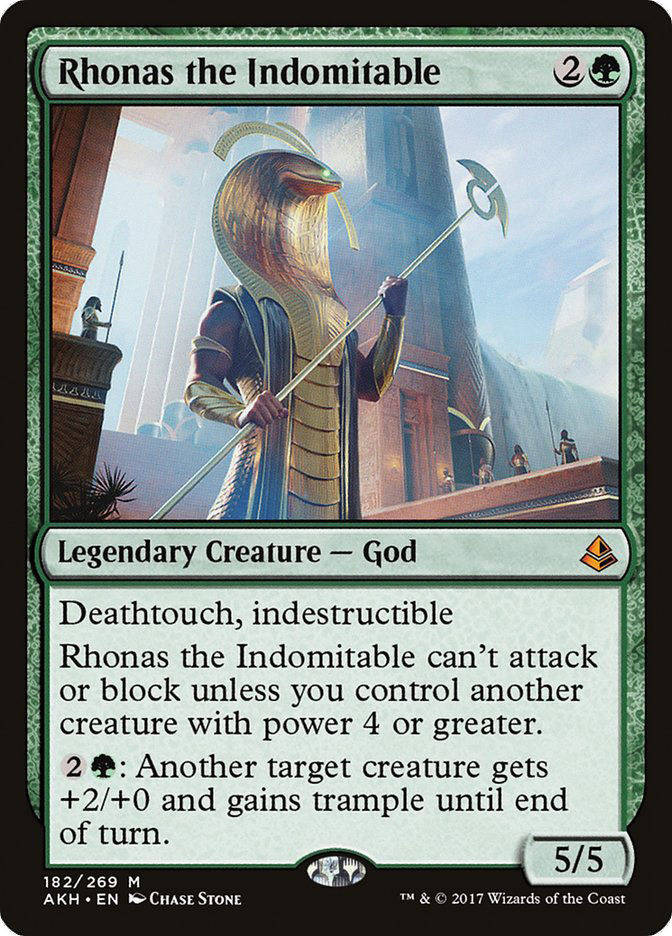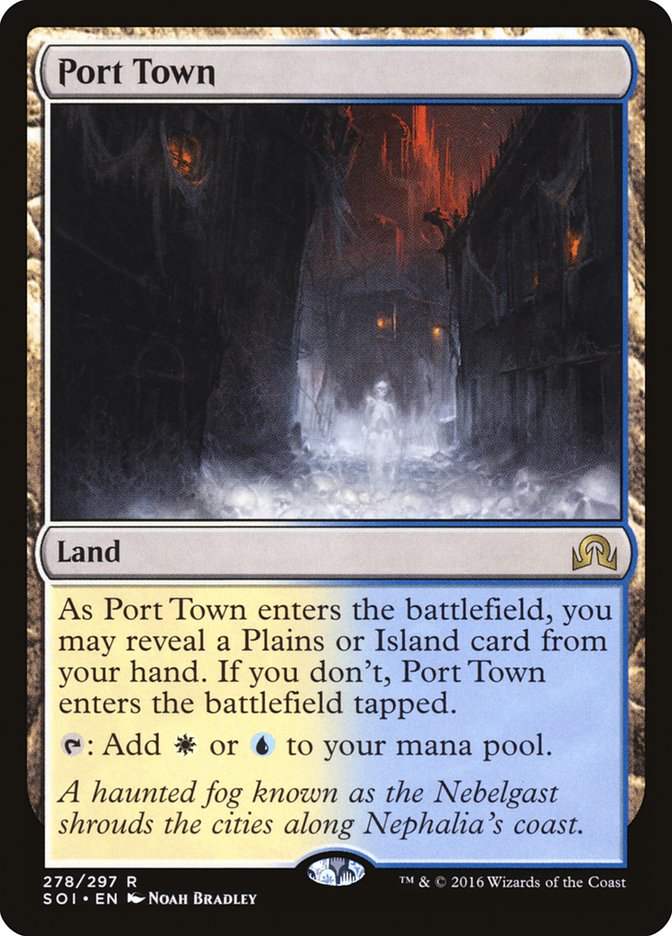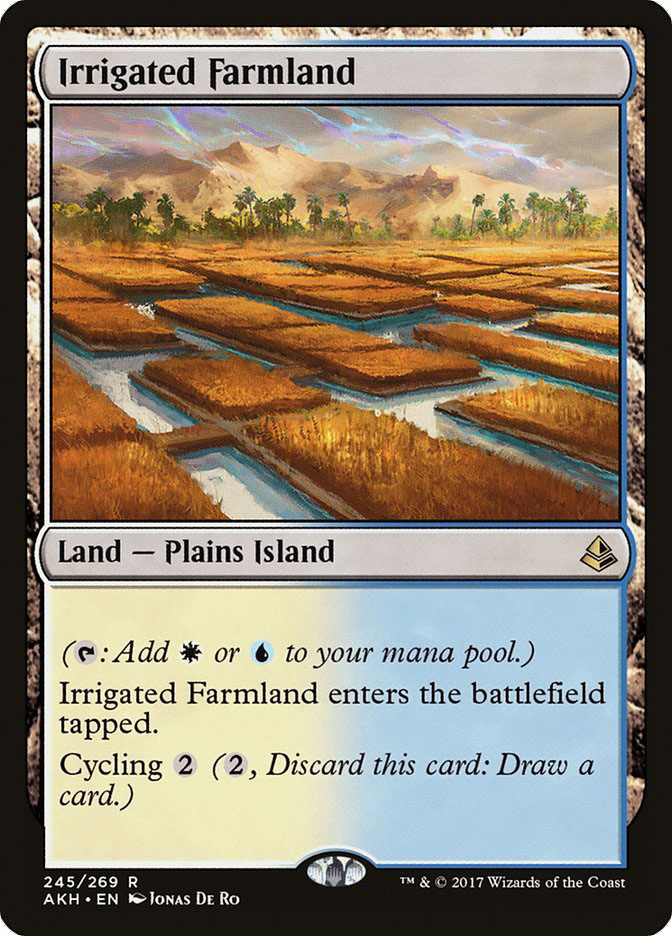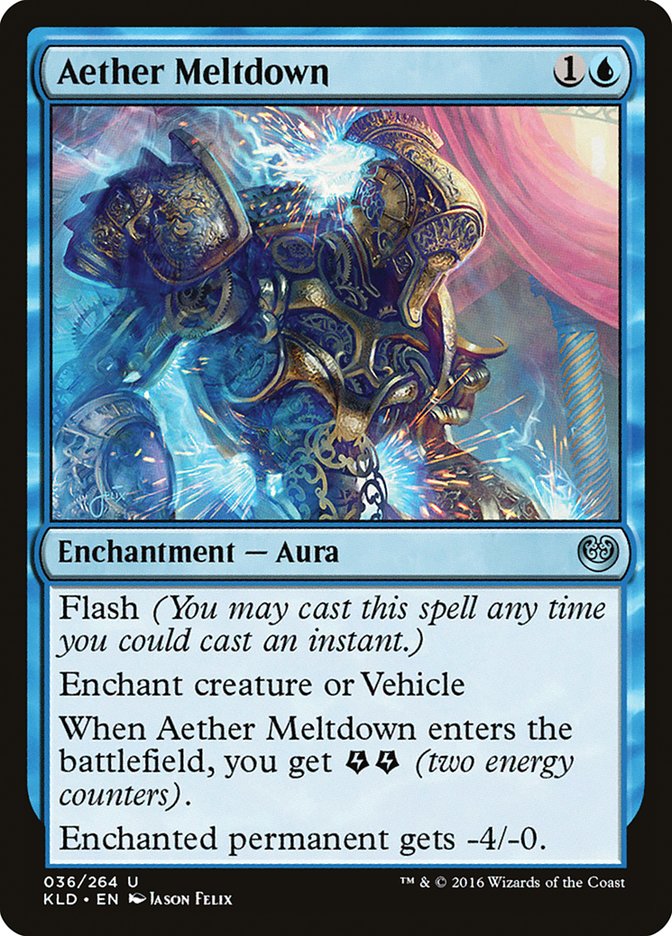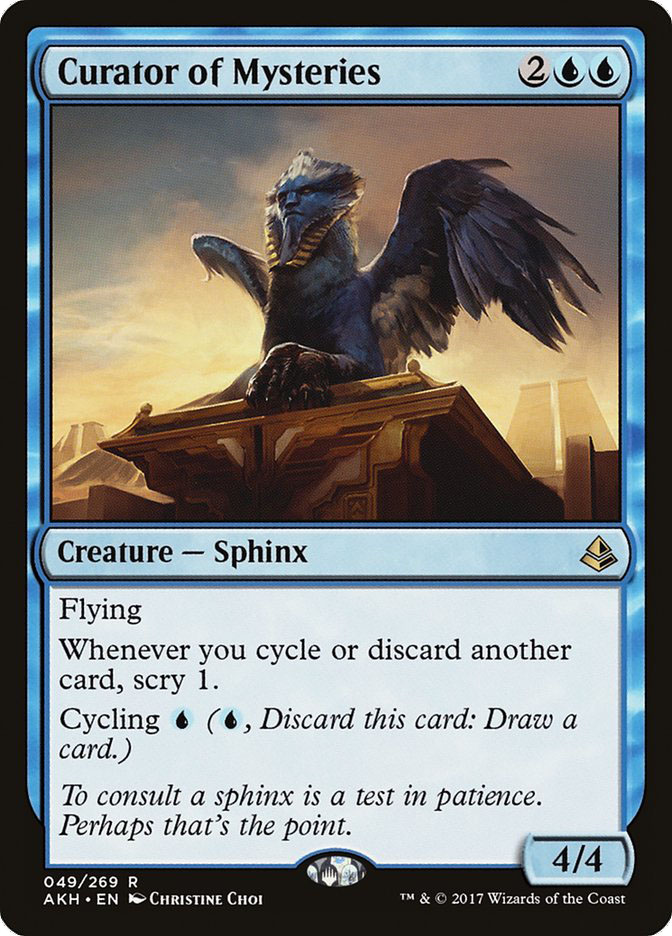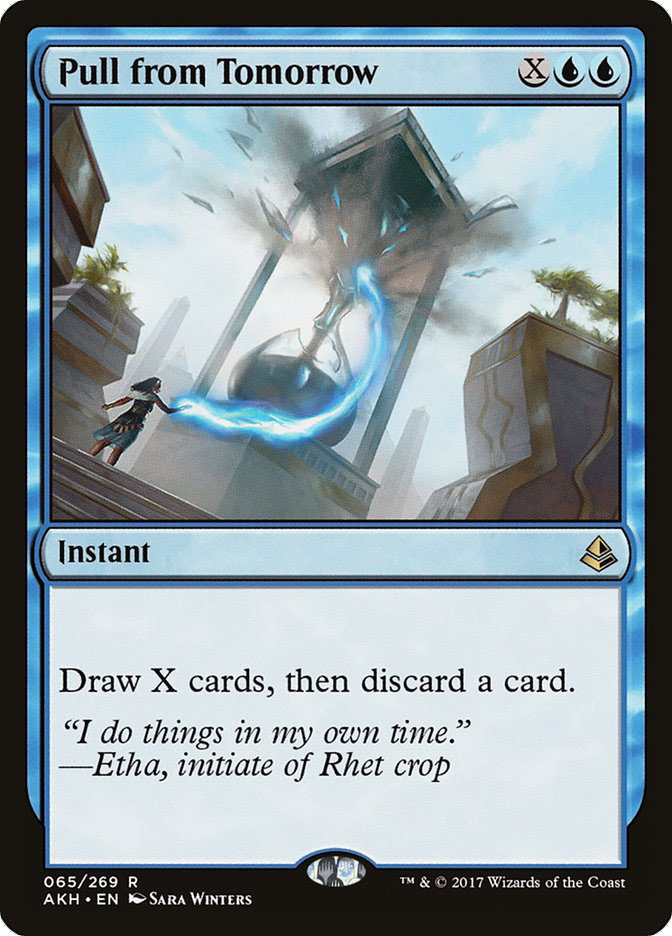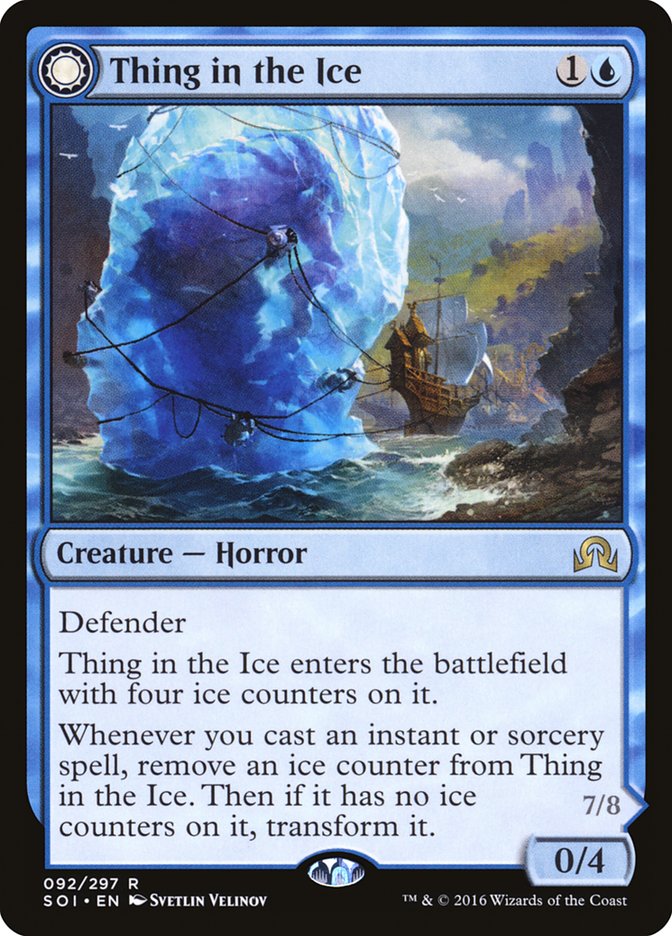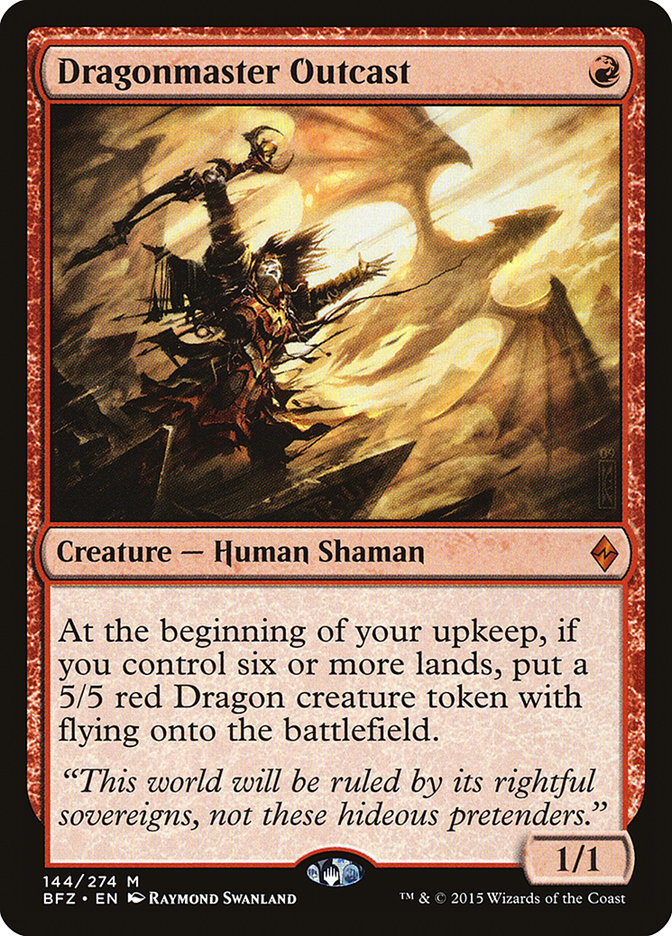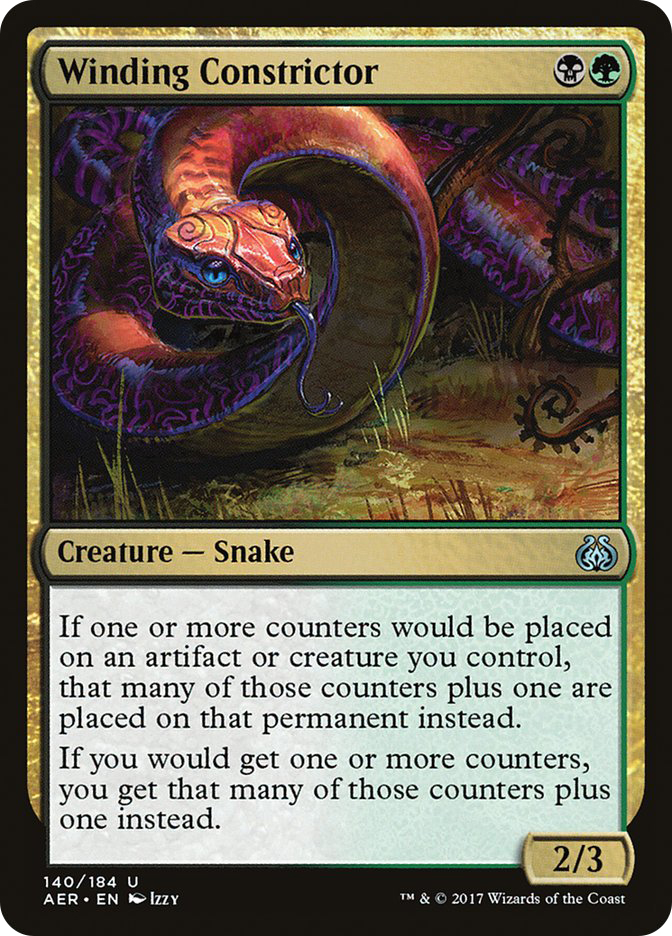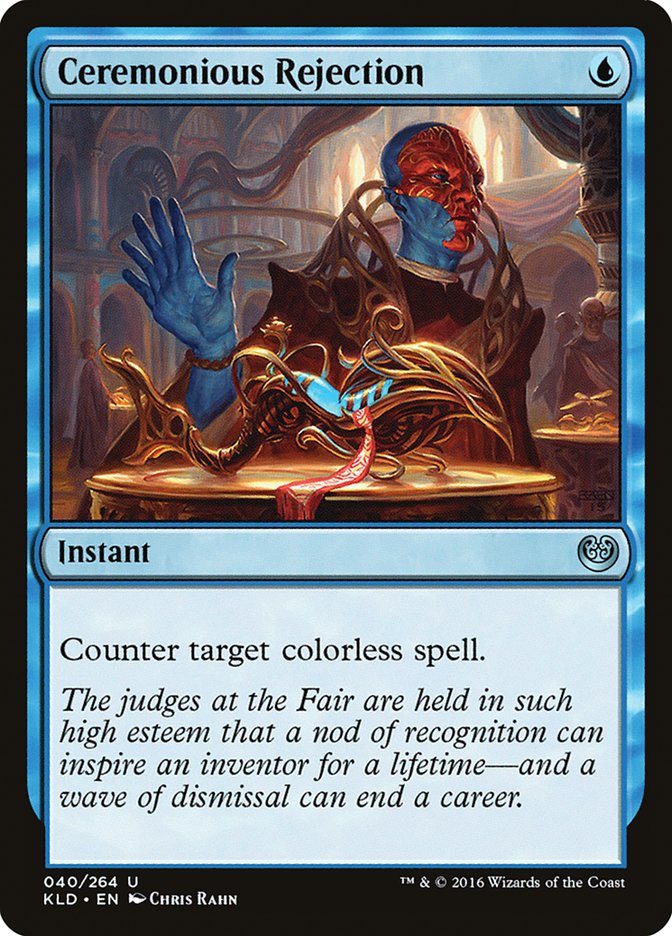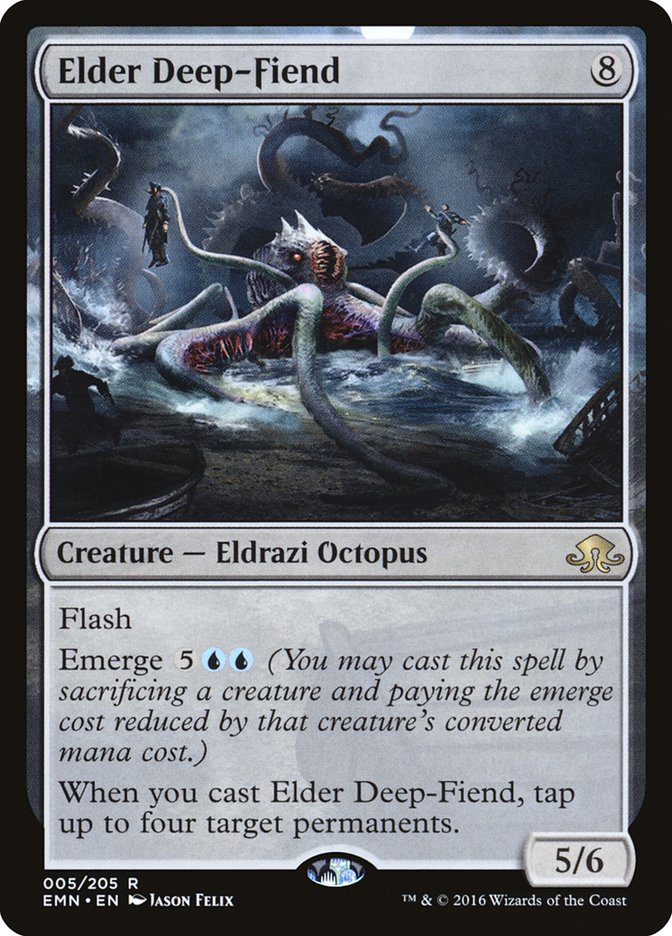“The great thing about Magic players is that they can accept being wrong if it means they get to win more.” – Zac Hill
“We as Magic players learn to accept Darwinian idea selection in order to collect match wins.” – Max McCall
This is a story of my attempts to develop blue control decks for Pro Tour Amonkhet. In terms of tales, it’s a tragedy. Enough time has passed now that I’m willing to open up.
If this doesn’t have a happy ending and winning decklist, what’s the point? This is somewhat about the fact that I feel like I found a lot of things that people haven’t really hit upon in the archetype, somewhat about the process of refinement, and really just about appreciating the struggle to make something that works and knowing when your creation is just too ugly to continue developing.
When do you quit? Let me tell you.
Step 0
Control is the deck I spent the most time on for Pro Tour Amonkhet. It’s also a deck I abandoned fairly early in the process, well over a week before the Pro Tour. Why is that?
I have a history with Torrential Gearhulk that I’ve really enjoyed, namely my experiences with it in Jeskai Control at Grand Prix Denver late last year. The card is absurdly good, with a Pro Tour championship pedigree at PT Kaladesh. The format was also shaping up to be relatively stable (and did end up that way), so it was hard to miss too far on your answer suite. However, if I was going to play it, I was going to have to spend time finding all the right numbers and configurations.
Step 1
The other reason I started on control was that Drake Haven was everything I ever wanted in Magic. Okay, I might be overstating it, but Astral Slide speaks to twelve-year-old me and brings me back to a simpler time….that’s also an overstatement. My life is still pretty simple. I just like the same things.
Time for a rant. Cycling Force Spike is damn good. If you think this doesn't appeal to experienced players, reconsider if you are one. pic.twitter.com/kkW4i9INqF
— Ari Lax (@armlx) April 10, 2017
Censor was another card I was all over from the start. Everyone now knows the card is good, but come on. It even works with Drake Haven!
Creatures (6)
Planeswalkers (2)
Lands (27)
Spells (25)

This was the very first list I tried, and it sucked a lot. I didn’t even play against real decks, just early brews.
Lesson: Try the ways to kill people, but make sure you try to integrate them with your entire deck.
One of the pairings I called out early on as interesting was using Liliana, Death’s Majesty to return Archfiend of Ifnir to the battlefield after cycling it. For five mana you got a five-mana threat and a leftover planeswalker, which is a pretty sick value play. It turned out that Archfiend of Ifnir just wasn’t good enough, though. A single -1/-1 trigger to your opponent’s creatures didn’t do a lot, a 5/4 flier was not good enough, and a two-loyalty Liliana just died.
Also worth noting: I skewed away from Torrential Gearhulk to try this. I wanted to give the duo as much breathing room as possible to be potentially good. There’s also a real cost associated with Torrential Gearhulk: six mana and a previous cast of a good spell. One of the problems of facing off against Mardu Vehicles with control strategies was that they would force you to have something every turn. Taking a turn off to cast Glimmer of Genius was hard, and if you missed on land drops without the card filtering (or, almost as bad, had tapped lands), it was just over. Getting to five mana is significantly easier, and I wanted to see if an option existed that did the job there.
To describe a specific example of this: you play some removal, but don’t have an opening to Glimmer of Genius. Or maybe you just didn’t draw one. You cast Gearhulk, and it dies to a removal spell. What now? Your opponent is down a bonus card, but you aren’t getting anywhere. That’s a bad spot to be in against Scrapheap Scrounger or any other way your opponent could gain card advantage.
Lesson: Zvi Mowshowitz had it right for years : mana rules Magic.
One thing I quickly noticed was that Choked Estuary never entered the battlefield tapped. Even on turn 8, 9, or 10, I just had lands to reveal because the cycling lands were there. That was sweet and I couldn’t pass up on maximizing the number of those lands I played. I steadily increased the number of Shadow lands in my deck from there on out.
A side note: once I moved to having so many cycling lands, I also noticed that Wandering Fumarole started getting a lot worse.
It turns out you can only throw away so many lands a game, and once you start throwing away those lands and replacing them with fractional spells, you don’t have the mana required to animate your Wandering Fumaroles and still do stuff. You are also adding a bunch of enters-the-battlefield-tapped lands to your deck, so having a bunch more, even if they are creatures, isn’t exciting. You would much rather have Spirebluff Canals that can let you curve out early.
Lesson: Cycling is even better than I thought, which means it’s multiple levels up from where it looks by default. I assumed Censor would be good and it was great, and even what I thought would be a marginal enabler in Hieroglyphic Illumination was pretty darn good.
Just having a bunch of draw-twos in my deck to Torrential Gearhulk back was really nice. The fail case of “Gearhulk dies and I’m back to square one” was much less likely, and you were also more likely to have six lands by turn 6. Importantly, Hieroglyphic Illumination let you cast interactive spells up the curve and still end up with a draw spell to Flashback off Torrential Gearhulk via cycling it, which was huge against Mardu Vehicles.
This play pattern was huge in managing Mardu Vehicles. They would curve out, but so could you. Their turn 6 was another doofus. Yours was Torrential Gearhulk. All things at parity, who wins?
Also convenient: with the cycling lands and Spirebluff Canals, you are less likely to have an untapped fourth land. Enter your Hieroglyphic Illumination, which handily shows up in the graveyard by turn 6 regardless of whether you have four mana.
Cycling also let me play a sweeper in my deck without fear of drawing it against Gideon or Heart of Kiran in the matchups where it could be backbreaking. Sweltering Suns is really, really good.
We then came to a bit of a problem point. Nothing critical, merely a stumbling block that created interesting and new decision points.
While the Gods weren’t super-prevalent or powerful, there just wasn’t a good way in Grixis to kill them. And it wasn’t just Gods, but all sorts of stuff. If you couldn’t stop Gideon, Ally of Zendikar on the way down, you had no backdoor out.
Back to the drawing board. Maybe Grixis would be fine if the metagame consolidated, but it could easily go (horribly) awry.
Creatures (6)
Lands (26)
Spells (28)

Awaiting the first set of results from the SCG Tour stop in Atlanta, this is what I was closing in on.
As you can see, the cycling land pairing showed up in significant quantities here too. I think, if I kept going through with this deck, I would have come back to the full set of Port Towns as dual lands are great, but it’s also possible I would have dropped down as I determined Gideon, Ally of Zendikar was a significantly less impressive sideboard card than it was six months ago.
Yes, there are three copies of Glimmer of Genius. That might seem crazy, as it’s arguably the second-best card of its type of all time, but this is a pretty common trend mid-testing. I almost registered a deck with two or three Thoughtseize at a Pro Tour where I pretty clearly wanted the full four that I did play. You had a bunch of Hieroglyphic Illuminations that did a similar job but never clunked up your hand in multiples, so why not try less.
If there’s a potential logical reason to make a change, nothing should be held as sacred. You can easily be wrong and change your mind back to the “obvious configuration.”
While it turns out all the things people play that you want to lock out of the graveyard die to Magma Spray, there existed potential worlds where the metagame featured 4/4s and Scrapheap Scroungers. Aether Meltdown was great in that situation. A card that shut down Heart of Kiran and Scrapheap Scrounger was just what the doctor ordered in the early days of the format.
And here we see the first signs of what spelled the end for our would-be protagonist. (Let’s be real; any deck with counterspells, Glimmer of Genius, and Torrential Gearhulk isn’t a pure hero. At best it’s murky.) Drake Haven had proved a little too slow, with a three-mana do-nothing sorcery just outside of the range of what Standard now allows.
The deck just lacked…. something. You needed a way to take initiative, to win games where you establish a window of control but are just outside of Gearhulk range. To stop Gideon in his tracks.
Curator of Mysteries was not the answer. A 4/4 with no card advantage apparently costs two or three mana in this format, not four. You could never cast Curator and profitably block with it, making it dead unless you were winning and too expensive to waste a turn on.
Pull from Tomorrow was the promised finisher, but it was lacking. It isn’t Sphinx’s Revelation. You can’t cast a Pull from Tomorrow for five into pressure and expect the game to end. Well, at least end in your favor.
“A loot is worth a mana just as much as the life is.”
Good joke, people.
Lifegain is only bad because it costs you cards and sometimes doesn’t do much. When you are stating you will win the game if you aren’t dead on turn 10, lifegain that doesn’t cost cards is basically cheating. An extra loot on top of the first four cards is just superfluous. It’s maybe worth an extra half a spell. Woo, you are already ahead multiple full spells of cards from your physical set of cards gained. Having small quantities of this effect is fine as a game-breaker, but it isn’t reliable.
Creatures (4)
Lands (25)
Spells (31)

From here, we started getting public information. While we didn’t exactly have Chris’s fully tuned U/R Control list, it’s safe to use it as an approximate benchmark.
The next step was figuring out the known gauntlet. That’s where it all started to unravel.
Creatures (10)
Lands (22)
Spells (28)
- 1 Negate
- 1 Kozilek's Return
- 4 Aetherworks Marvel
- 4 Woodweaver's Puzzleknot
- 4 Harnessed Lightning
- 4 Attune with Aether
- 4 Glimmer of Genius
- 3 Dissenter's Deliverance
- 3 Censor
Sideboard

Again, this is all approximate. We weren’t all-in on Dissenter’s Deliverance, but one of the Temur Aetherworks decks we tested was this framework. No Servant of the Conduit, bunches of Glimmer of Geniuses, and lots of Whirler Virtuosos.
And I couldn’t beat it. Game 1 could be close, but after sideboarding it all fell apart. They could cut down on the Woodweaver’s Puzzleknots and the extra Ulamog, the Ceaseless Hunger or two and just become a deck of all action. Tapping out was death. Waiting into the face of Ulamog was death. Trying to play at parity with all of their cards was death as one slipped through the crack and eked out a two-for-one. Trying to play at mana parity with their counters was death. Hoping Torrential Gearhulk would cleanly solve the issue was death, as they left in enough Harnessed Lightnings to slow you down.
There wasn’t a threat good enough to fudge the numbers. Gideon, Ally of Zendikar and Chandra, Torch of Defiance were too fragile without a Wall of Omens-type card to stall for them without costing cards. I needed an Ashiok, Nightmare Weaver that could turn a real advantage before it was pressured by Thopter tokens or other three-drops. Dragonmaster Outcast and Thing in the Ice were too slow to get going. To reference the recent Throwback Standard queues, I needed a Nantuko Shade that just got down to business and left a dent in their life total that I could follow up on if it died, or an Anurid Brushhopper that stuck around in the face of removal and held the fort.
From my prior searches, I knew the card I was looking for was nowhere to be found. I ended my quest for the perfect control deck, knowing a key component was missing. I moved on to bigger and probably better things.
Step Back
Back to my first point. Why am I writing about this? Why do I care so much about this kind of exploration and tuning in a format so stalled on Temur Aetherworks that Brad Nelson wants to light his life on fire? Why do I care about month-old testing?
Despite being a pretty fundamentally broken deck, Aetherworks kinda sucks in a lot of ways. You are a single-card combo deck without a lot of good card selection and zero tutoring, so sometimes you just fail. Or, worse, they pick off the one Aetherworks Marvel you drew and everything falls apart as you dig for another. You can’t always have the Negate and the Marvel and the energy producers and hit your 40% shot at Ulamog, the Ceaseless Hunger and so on. The Marvel deck puts this or a valid second plan together enough to make it hard to brute-force an otherwise subpar matchup to good, but I think you can in return bash through their backup plan and exploit their inconsistent main plan.
The two ways I think are best to do this are Winding Constrictor and blue… stuff.
The Winding Constrictor plan is pretty well-explored, most recently by Shaun McLaren via his Grand Prix Montreal Top 8 finish.
Blue stuff… that’s the puzzle.
Blue has a real payoff in the best anti-Marvel cards in the format: counterspells. Other decks have access to these cards, but Marvel has the tools to bash through slower control plans via a critical mass of random creatures and Glimmer of Geniuses once they sideboard out Woodweaver’s Puzzleknots. If you are bashing them and countering their spells, then they are getting into trouble.
I initially had started mulling over this a week ago, and since then we have seen this idea cascade through Magic Online and the SCG Baltimore Standard Classic.
W/U Flash variants do this, but they are also full of fragile creatures that can get picked off by sweepers and don’t clock well. This is why, of all the W/U variants, I would promote something with Heart of Kiran. Maybe Pascal Maynard’s Esper list, maybe something like the Jeskai Vehicles that Donald Smith was working on over the last few weeks. The below is a list that was suggested by my fellow team Massdrop member Ricky Chin after testing extensively with the archetype. You just need creatures that hit hard enough to matter.
Creatures (21)
- 1 Archangel Avacyn
- 4 Thraben Inspector
- 4 Spell Queller
- 4 Scrapheap Scrounger
- 4 Toolcraft Exemplar
- 4 Veteran Motorist
Planeswalkers (3)
Lands (24)
Spells (12)

The other direction I drifted was Elder Deep-Fiend. That card does not mess around. Still, it looks like, in the decks where Elder Deep-Fiend could make it, people are opting for maindeck Negate instead.
I think that’s fine as long as people don’t pick up the B/G decks in large quantities, at which point tapping their 8/8’s becomes really exciting for the Temur deck. Note that while Negate is not great against Zombies neither is tapping only four permanents, so you aren’t getting significantly better outcomes either way. I won’t go too deep on a deck I haven’t put time into, but fortunately Matt Tumavich has me covered.
Even if people fully adopt these decks, I don’t think we will see an immediate massive drop-off in Aetherworks. What needs to happen for that is the re-level of these decks needs to also cover Aetherworks. If we get into Rock-Paper-Scissors where Aetherworks beats the decks that beat disruptive bulky aggro, it’s here to stay as 20% or more of the format. Honestly, Bant Aetherworks might be a reasonable next step to take, as Fumigate does what Chandra, Flamecaller can’t against 5/5 or larger creatures.
Good, Fine, Acceptable, Marvelous
I truly believe Standard is in a much better place than people advertise it as. This is coming from someone who has aggressively made fun of people in the past when they had it wrong while beating them in long sets of games (people actually thought their deck without Primeval Titan beat Cascade Jund!). Aetherworks Marvel is good; more importantly, the outcry is because it can suck to lose to.
Guess what. That’s sometimes how things work. You can’t always win. Not every deck you design is going to succeed. But this is definitely a case where you might try and learn something surprising.



